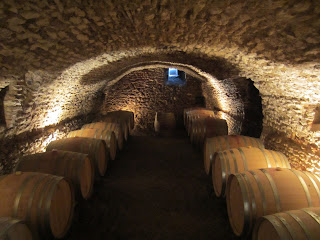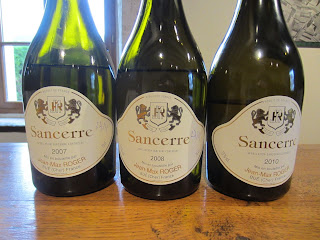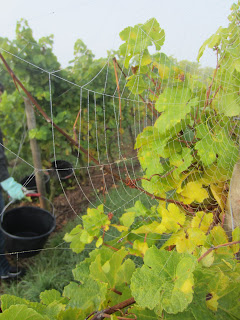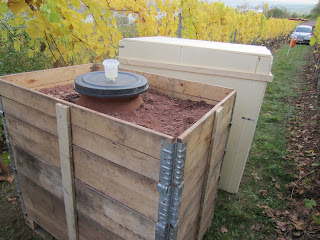It is important to remember that everything is relative, and also that there are numerous implications depending on the person and the word. Language is complicated as much as communication itself, and over the past 14 months (to the day in fact) I have had so many situations where things can have different meanings depending on audience and context. My understanding of things, not only about wine, has changed significantly and I have discovered that it is important to always clarify and speak relatively. For example, there is a word in French that will be familiar to most wine-lovers that actually has different meanings in English which are related but have different connotations. The word is ‘grand’, and in the context of vineyard classification for such regions as Burgundy and Alsace, it means ‘great’ or essentially ‘the best’. The word can also mean ‘big’ or ‘large’, which implies size rather than importance and in terms of wine, could refer to the size of vineyards or a winery for example. When a winery produces 3.5 million bottles per year in Sancerre, this is both great and large, but in the Australian context it is merely a medium-sized winery. Everything is relative. What is interesting is that in my humble opinion I began my week with the most important producer in Sancerre and finished with the largest, and the quality of the wines to decline with each estate I visited.
 |
| Cellars in Sancerre |
For my morning appointment on the third and final day in Sancerre, I visited a producer in the southern-most part of the appellation in the town of Bue. The Roger family have been growing wine in this part of the world for about 400 years, and now there are several estates carrying this name that are close or distant relatives. When Jean-Max took over the four hectares of vineyards of his branch of the family, it was the 1970s and wine (particularly Sancerre) was beginning to experience a boom, particularly in established and new export markets. From this four hectares the vineyard holdings grew to now total almost 30 hectares, around a number of the southern Sancerre villages on a couple of different soils. Today, of his three sons two of them work with him at the domaine whilst the third also works in wine in the Languedoc-Roussilon part of France in the south. All three have had experience in different parts of the world, and I met with the younger of the two who work with their father, Thibault.
 |
| The soil profile of one of the vineyards |
Thibault first took me to some of the vineyards to show how elevation and exposition as well as soil type influence the characteristics of the wine. It is starting to get really cold now, with snow forecast for the weekend, so with the additional wind atop the hill it was a little unpleasant. At the time it was quite overcast and a little foggy, otherwise the village of Sancerre would have been visible. The domaine has recently replanted some of the vineyards on the soils which are heavier in clay to produce a new terroir wine in the future. In the vineyards they minimise the amount of work they do which includes the spraying of chemicals. In the winery the fruit is gently pressed to extract the clean fruit, and most of the wines don’t see any oak as is the trend here. They have some vineyards in an appellation closer to Bourges, Menetou-Salon where they grow the same varieties, and they also purchase some wine from Pouilly-Fume across the river. Over the vineyard tour and wine tasting I had the tendency to waffle about various wine-related topics and things I have experienced on my trip, and I appreciate Thibault tolerating me banging on for so long. The wines are all very good, but I thought the red wines were particularly strong for them. Thibault explained that people are rarely disappointed with white Sancerre wines, but finding a good or great Sancerre red is a lot harder. Fair enough. Click
here to read my tasting notes.
 |
| Three different vintages of the top wine from Jean-Max Roger |
The final estate I visited in Sancerre is located in the village of Chavignol which is famous for its cheese as much for its wine. The village in fact is practically split between the wine family and the cheese family, and they each own about 50% of the property. I noticed that throughout the week I was very often asked what other estates I was visiting, particularly whilst I was in Sancerre. I get the impression there is a bit of friendly rivalry here. When I mentioned I was finishing at Henri Bourgeois one person referred to it as the ‘American winery’, which I took to either mean it was very modern and mechanical, or it was very large. It turns out that it is both, but as I have said several times on this blog, size does not necessarily have anything to do with quality, and don’t ever let anyone try to convince you otherwise. Just don’t fall for certain producers claiming they are boutique or artisan when they produce millions of bottles. Ten generations of Bourgeois have lived here in Sancerre, but like the rest of Sancerre it was very modest until recently. In fact in 1950 the vineyard holdings were just two hectares, giving you an idea about how much Sancerre has grown in the last sixty years. There are now around 70 hectares under vine within the Sancerre appellation with more outside of it, which only provides them with half of their required fruit, and with the exception of the cooperative is the largest winery in the region.
 |
| Some of the fermentation tanks at Henri Bourgeois |
The Henri Bourgeois winery compared to others in the region is a marketing machine. The reply I received to my appointment request was practically a press release that presumably gets sent to anyone requesting an appointment, and comes from the executive assistant of the General Manager Arnaud Bourgeois. The tasting room is similarly very modern and includes lots of displays both audio-visual and otherwise. I was shown around by the manager of the tasting room who used to be a sommelier, and has presumably taken hundreds of people from all over the world through the cellars. The tour was pretty PR and suggested that I had no idea how wine was made or packaged as it focused on the fermentation and bottling, not really talking at all about the vineyards. I can’t help but feel a little disappointed when I experience these kind of visits, particularly in such an artisan and agricultural wine region as Sancerre. This isn’t Bordeaux after all. Between the Sancerre, Pouily-Fume, vins de pays and Marlborough wines they bottle about 3.5 million per year, and ship the wines to over 90 countries. Keep an eye out as it won’t be too difficult to find some Bourgeois wine near you. The top wines are very good, and are certainly worth ageing as they take a little longer to develop in the bottle. The quality of the wines far outweighed the quality of the visit. Click
here to read my tasting notes.
 |
| Orders waiting to go all over the world |
Click
here to see more photos from my final day in Sancerre, France.












































